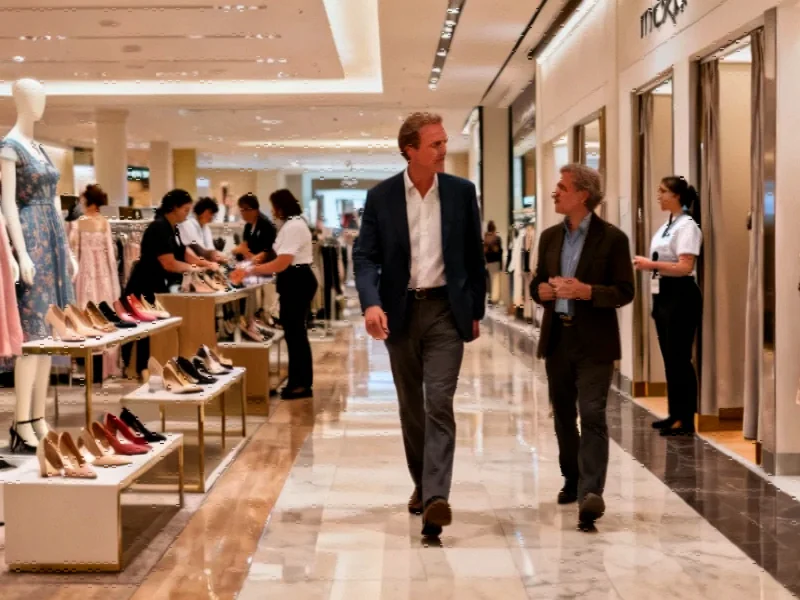Embracing Change in the Digital Age
When Tony Spring assumed leadership of Macy’s in early 2024, he inherited a retail institution grappling with an identity crisis. The iconic department store chain, once synonymous with American shopping culture, had seen sales plummet from $28.1 billion in 2014 to just over $22.3 billion a decade later. Spring recognized that radical transformation was necessary, telling Fortune, “We had to have a moment of reflection and say, ‘We’re not as good as we think we are.'” This admission marked a significant departure from the denial that had characterized Macy’s approach for years.
The challenges facing traditional retailers have been amplified by recent technology advancements and shifting consumer preferences. As Macy’s revival strategy shows early promise, the company is learning valuable lessons about balancing physical retail excellence with digital transformation. Spring’s background as Bloomingdale’s CEO provided him with unique insights into what makes department stores successful in an era dominated by e-commerce giants and specialty retailers.
The Store Experience Renaissance
At the core of Spring’s strategy is a back-to-basics approach focused on elevating the in-store experience. At 125 “priority” stores, including the upscale Topanga Westfield location in Los Angeles, Macy’s has doubled staffing in women’s shoe departments and tripled it in dresses areas. The return of live attendants in fitting rooms represents a symbolic reversal of previous cost-cutting measures that had eroded service quality.
Neil Saunders, a retail analyst and former Macy’s critic who toured the improved stores with Spring, noted the dramatic changes. “Their merchandising is sharper,” Saunders observed. “There is greater neatness on the shop floor. They’re starting to elevate the shopping experience.” This attention to detail extends to visual presentation, with elegantly styled mannequins and reduced clutter creating an environment more reminiscent of Macy’s premium competitors.
Cultural Transformation and Workforce Engagement
Spring understood that operational changes alone wouldn’t suffice—Macy’s needed a cultural reset. “The big impact we’re finally seeing comes from the fact that we’re all singing from the same hymnal,” the CEO explained. This unified approach has been crucial for motivating a workforce demoralized by years of declining revenue, store closures, and staff reductions.
The hospitality mindset Spring brings from his hotel and restaurant management background is central to this transformation. He wants employees to see their roles as extending beyond folding clothes and operating cash registers. “We’re all driven by psychic reward,” Spring noted, emphasizing the importance of creating meaningful customer interactions. This philosophy aligns with broader industry developments in customer experience optimization across retail sectors.
Strategic Store Optimization and Brand Relationships
Macy’s footprint strategy involves reducing from 449 locations to approximately 350, with disproportionate investment flowing to the 125 priority stores. This selective approach acknowledges that not all physical locations can be saved, but those that remain must offer compelling reasons for customers to visit.
Equally important has been repairing relationships with brands that had abandoned Macy’s due to subpar presentation of their products. Ralph Lauren, Coach, Nike, and Levi’s had all pulled merchandise from shelves, frustrated by the chain’s inability to maintain brand standards. Spring’s efforts to attract new partners have shown early success, with Abercrombie & Fitch’s children’s business recently returning to Macy’s, alongside new additions like Reiss, Good American, and Theory.
These brand partnerships occur against a backdrop of significant market trends affecting retail investment and consumer spending patterns. The economic pressures facing shoppers make Macy’s turnaround challenge even more formidable, though recent comparable sales improvements suggest Spring’s approach is gaining traction.
Learning from Past Mistakes
Spring is candid about Macy’s previous missteps, particularly the obsession with “shiny objects” like the ill-fated “smart mirrors” introduced in 2015. “We became enamored with shiny objects and feeling we needed to keep up with everyone instead of playing our playbook,” he acknowledged. This tendency toward technological gimmickry distracted from core retail fundamentals.
Similarly, the shift to self-service “open-sell” footwear sections a decade ago proved disastrous, undermining the service differentiation that justifies department store pricing. As Saunders bluntly put it, “If you want open sell, you can go to TJ Maxx.” These lessons in maintaining operational excellence while embracing genuine innovation reflect the delicate balance required in today’s retail landscape, where related innovations in materials science and product development continue to reshape consumer expectations.
The Path Forward
Early indicators suggest Spring’s strategy may be working. Macy’s recently reported its best comparable sales performance in 12 quarters, with a 1.1% year-over-year increase that represents a significant achievement given current economic headwinds. The company’s massive survey of 60,000 current and former customers has provided crucial insights into consumer desires, informing decisions about staffing, merchandising, and store experience.
As Macy’s navigates its transformation, the retail environment continues to evolve with emerging challenges like the digital security concerns affecting businesses worldwide and the creative pressures facing entertainment and retail experiences alike. Spring acknowledges that Macy’s still has much to prove, but his willingness to confront uncomfortable truths and focus on retail fundamentals offers hope that this American institution might yet reclaim its place in the nation’s shopping landscape.
The ultimate test will be whether Macy’s can sustain this early momentum while continuing to adapt to a retail ecosystem that shows no signs of slowing its transformation. For now, Spring’s combination of operational discipline, cultural renewal, and strategic focus provides a compelling blueprint for traditional retailers seeking relevance in the digital age.
This article aggregates information from publicly available sources. All trademarks and copyrights belong to their respective owners.
Note: Featured image is for illustrative purposes only and does not represent any specific product, service, or entity mentioned in this article.



